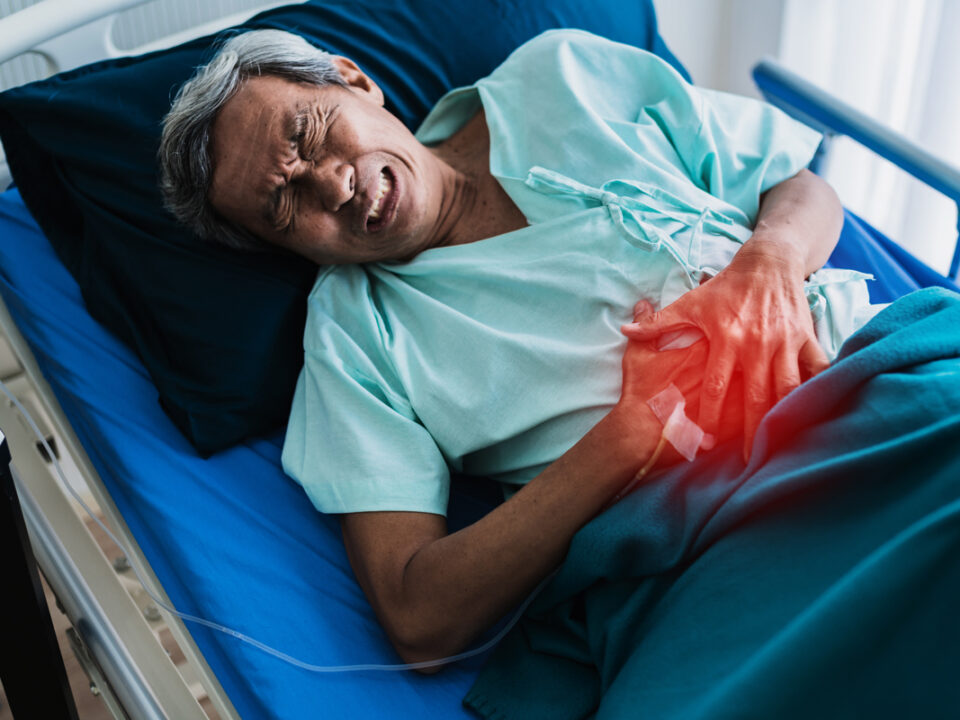
Role of HBOT in Sensorineural Hearing Loss
26/07/2024
Role of Hyperbaric Oxygen Therapy (HBOT) in Liver Diseases
27/08/2024A promising new therapeutic option in the fight against opioid addiction is Hyperbaric Oxygen Therapy, or HBOT. By inhaling pure oxygen in a pressured setting, this therapy improves oxygen supply to tissues and speeds up the healing process. According to research, by mending brain damage brought on by opioid misuse and controlling noninflammatory, HBOT can aid with craving reduction and withdrawal symptoms. It has also been demonstrated to enhance mood and cognitive function, both of which are frequently compromised in those going through addiction recovery. HBOT is a supplementary therapy that is non-invasive and has the potential to support existing addiction treatments by providing a multi-modal approach to the treatment of opioid dependent. This is what HBOT India has to say.
Opioids
Opioids are a type of drug used to treat pain. It reduces pain perception and increases pain-relieving hormones when it attaches to opioid receptors in the brain and body. Doctors often prescribe opioids to treat moderate to severe pain. Still, they can be highly addictive and lead to dependence and, in some cases, overdose and death. Some common opioids include condone, hydrophone, and morphine. It is essential for people taking opioids to use them only as directed by a doctor in accordance with their risks and side effects.
Opioid Addiction
The misuse of opioids and addiction to these drugs has been significant problem in the United States since the 1990s. The HHS designated it a public health emergency in 2017. According to numbers provided by the HHS, there were 10.1 million individuals who abused highly addictive prescription opioids. Similarly, 1.6 million people used painkillers that were prescribed to them. And it’s terrible that opioids caused two out of every three drug-related deaths in 2018. As of 2018, more than 14,000 drug treatment centers in the United States had helped 1.27 million people addicted to opioids with medication. But in a recent study, a group of researchers at Washington State University wanted to see if HBOT could help people who were addicted to opioids.
Opioid Affects The Brain in Shorter and Longer Terms
In the past few years, there has already been a lot of attention on the opioid problem, with news of overdoses and the rising death count, but less on the brain damage caused by continuous opioid misuse. When someone takes an opioid, the drug gets into the central nervous system, relieves pain, and makes them feel good.
However, long-term usage leads to regulations of dopamine transmission and damage in the prefrontal cortex, adversely affecting the user’s ability to think clearly and do daily tasks. Imaging has shown that long-term opioid usage also causes a decrease in brain volume. Even after a few years of recovery, individuals who use opioids still have cognitive problems. This shows that the issues are long-term and not just caused by the drug.
In certain studies, opioid addicts have impaired precognitive functions, including attention, memory, spatial planning, and executive functioning. Long-term opioid use also slows information processing, making it hard to adapt to new settings or gain new knowledge vital to rehabilitation. Also, people who use opioids have trouble solving complicated problems, affecting their decision-making and reasoning abilities. The brain damage and cognitive problems caused by opioid abuse have a big effect. Issues like the inability to solve problems or control impulses can make people more likely to use drugs and take risks. They do not respond efficiently to treatment and recovery training programs. Brain imaging and precognitive screening showed that opioid abuse could cause brain trauma that may have long-term effects on a person’s ability to recover, be a part of their community, and live a good life. Cognitive rehabilitation develops attention, learning, information processing, emotion regulation, and executive functioning to treat drug abuse and brain damage.
How Does Opioid Overdose Damage Brain Chemistry?
An opioid overdose can cause brain damage. When someone takes too many opioids, their breathing slows down. This can cause hypoxia, a condition in which the brain doesn’t get enough oxygen. Hypoxia can cause brain damage that can’t be fixed, a coma, or even death. Brain damage is more likely to happen if you overdose on opioids more than once or have low oxygen levels for an extended period.
Opioids’ Brain Effects
Opioid usage affects brain chemistry, causing tolerance, dependency, and addiction. Opioids relax, reduce pain, and, in large doses, create pleasure. The brain responds to opioids by producing various enzymes and substances. Over time, the brain overcompensates enough that an opiate addict can’t reach the same pleasure. An opioid addict will likely continue to consume opioids after reaching this phase to prevent withdrawal symptoms.
Normal Brain Chemistry
The brain creates typically natural chemicals that attach to its opioid receptors and activate the production of other substances that help maintain the body’s alertness, respiratory control, pleasure, muscular tone, and other essential activities. These compounds are called endorphins.
Altered Brain Chemistry During Opioid Abuse
Opioids stimulate the body’s pleasure sensations by binding to opioid receptors. Internally, the brain adjusts to this new environment by creating fewer natural substances. This lowers the body’s capacity to modulate wakefulness, causes trouble breathing, and impairs attention and concentration.
Opioid Abuse Treatment
Usually, detox is the first step in treating someone with an opioid use disorder. Getting off of opioids can be painful and lead to recurrence. During detox, you will be given medicines to help ease withdrawal symptoms. Getting off opioids usually takes about one week. Methadone withdrawal symptoms might make detoxing take longer. The following treatment options are available after detox: Therapy, Medication, and Self-Help Groups.
Treatment for Opioid-related Brain Damage
Withdrawal from opioids causes the brain to revert to its chemical makeup before drug use. The outcome is a healthy brain, but the process can be disruptive and uncomfortable.
Hyperbaric Oxygen Therapy to Fight Opioid Addiction
HBOT benefits various diseases, including wounds and acute injuries. Hyperbaric Oxygen Treatment provides oxygen to oxygen-starved cells. It disables some toxins, reduces tissue death, and keeps oxygen radicals from stopping blood flow. In their latest report, Washington State University researchers tested whether HBOT might help opioid addicts. The results are encouraging. HBOT participants could reduce their dosage by 4.3 mg over three months following the research. Non-HBOT patients had 0.25 mg. The treatment reduced withdrawal symptoms by half compared to the control group. A second study examined the withdrawal symptoms of eight people. HBOT reduces pain and opioid addictions. Sleep and emotions also improved. WSU professor Matthew Layton said HBOT might reduce relapses. Hyperbaric Oxygen Treatment might be utilized as a non-pharmacological approach, he believes. The objective of this is to minimize methadone consumption during tapering. Here is research on HBOT and opioid addiction.
Pain Relief Gave A Clue to Opioid Abuse
Quick initially observed withdrawal patients as a volunteer at the UCSF Medical Center. He has recently studied the usefulness of Hyperbaric Oxygen Treatment on several illnesses, including how it may relieve chronic pain for three to four weeks. The therapy’s pain-relieving mechanism may include the opioid system. A 1995 article translated by WSU math professor Sergei Lapin reported that the HBOT treatment eased opiate withdrawal in “opium monomaniacs.”
WSU researchers administered mice morphine sulfate twice a day for four days. On day 5, scientists induced withdrawal using naloxone, suppressing opioid effects. They watched for withdrawal symptoms. Some mice had 30- or 60-minute Hyperbaric Oxygen Treatments at 3.5 times atmospheric pressure before naloxone.
Withdrawal Symptoms Reduced to 50%
Treated animals showed fewer withdrawal symptoms compared to untreated mice. Wet-dog shakes jumps, and other tremors decreased much more drastically in mice. Mice in the chamber had almost half as many fecal pellets as mice that were not. Quock and colleagues consider this as a first-established phenomenon in an animal model of opiate dependency.
Increased Oxygen Helps in Detoxification
Breathing oxygen under pressure has several advantages, particularly during detox and addiction treatment. HBOT reduces opiate withdrawal symptoms; helps heal injured tissues by boosting oxygenated blood circulation to injured tissues and producing new blood vessels; Detoxifying drugs and alcohol; better sleep improves decision-making and mood regulation. Increase stem cell synthesis by 800%; these cells restore damaged pancreatic, liver, and brain tissues.
Drug abuse can also hurt the nerve sheaths and the tissue around them, or it can damage nerve fibers, which can cause a loss of feeling, numbness, and a number of other brain problems, such as cognitive dysfunction. HBOT can heal nerves and keep them from getting worse.
Summary
Since the 1990s, opioid abuse and addiction have plagued the U.S. Long-term use causes dopamine dysregulation and prefrontal impairment. Opioid misuse causes brain damage and cognitive issues. Opioid use disorder may create brain damage that hinders recovery. Opioid use causes tolerance, reliance, and addiction. Opioid withdrawal returns the brain to its pre-drug state. Washington State University researchers say HBOT may improve opioid withdrawal symptoms. HBOT oxygenates oxygen-depleted cells, lowers tissue death, and prevents oxygen radicals from blocking blood flow. Compared to the control group, therapy halved withdrawal symptoms. Three to four weeks of oxygen treatment may ease chronic discomfort. The medication alleviated opiate withdrawal in “opium narcomaniacs,” according to a 1995 paper translated by WSU math professor Sergei Lapin. Oxygen under pressure reduced fecal pellet production in mice.




